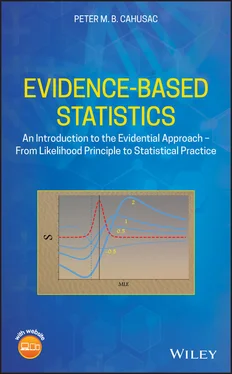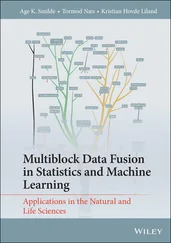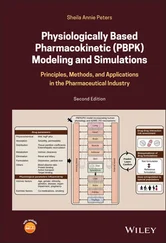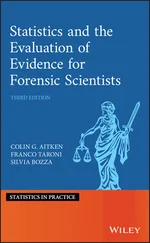8 Appendix CTable C.1 Baseline characteristics of the 104 493 individuals from the Copenh...
1 Chapter 1 Figure 1.1 From sampling distribution to likelihood function. The top curve ... Figure 1.2 Effect size versus sample size: which provides most evidence agai... Figure 1.3 A flow diagram illustrating the general procedure of calculating ...
2 Chapter 2 Figure 2.1 The scales for LR and support S . The ‘compressed’ LR scale is app... Figure 2.2 The Greek goddess Themis, personifying justice. She holds the Sca... Figure 2.3 The likelihood function (dark grey) and wider population distribu... Figure 2.4 The likelihood function for the extra sleeping time data. The mea... Figure 2.5 An alternative visualization for the likelihood that produces ide...Figure 2.6 This shows the likelihood function indicating the likelihood if t...Figure 2.7 Calculating the maximum likelihood ratio (LR M). The same likeliho...Figure 2.8 The likelihood function showing likelihood interval limits for S -...Figure 2.9 The support curve for data given in Section 2.1.3. The vertical a...Figure 2.10 (a) Support (log LR) curves for different effect sizes: −0.5, 0....Figure 2.10 (b) The same plot of support curves for effect sizes from −0.5 t...Figure 2.11 Misleading and weak evidence in relation to Type I and Type II e...Figure 2.12 Flowchart showing the steps necessary for the evidential analysi...
3 Chapter 3Figure 3.1 The likelihood function for the difference in sleeping time. The ...Figure 3.2 The likelihood function for the independent samples analysis. Her...Figure 3.3 A Gardner–Altman estimation plot for the independent samples data...Figure 3.4 The likelihood function for the mean difference between Drugs B a...Figure 3.5 Plots of misleading M and weak W probabilities according to sampl...
4 Chapter 4Figure 4.1 Two models for the effects of intensity of training on fitness. (...Figure 4.2 Plot of skill against weeks of practise. The line represents the ...Figure 4.3 Line fitting to linear (a) and quadratic (b) models. In each plot...Figure 4.4 Group means for the factorial ANOVA. The null model is represente...Figure 4.5 Plot of means of hours of extra sleep given three different drugs...
5 Chapter 5Figure 5.1 A plot of the running times in seconds, for 25 competitors in the...Figure 5.2 The likelihood function for the correlation obtained between the ...Figure 5.3 World record running times for women in the 1500 m event. The fir...Figure 5.4 Figure 5.3 with fitted lines added. The dotted line is the quadra...
6 Chapter 6Figure 6.1 The likelihood function for data based on 6 out of 10 patients wh...Figure 6.2 Plot of the support function (log likelihood) for 6 out of 10 dea...Figure 6.3 The quadratic approximation used to generate the support function...Figure 6.4 The quadratic approximation for π = .6 and N = 100, shown as...Figure 6.5 The scaled likelihood function for Poisson parameter μ with ...Figure 6.6 The log likelihood function for the rate ratio, shown as thick da...Figure 6.7 The OR likelihood function for the folic acid and neural tube def...Figure 6.8 The likelihood function for data based on 60 out of 100 patients ...Figure 6.9 The likelihood function for data based on 60 out of 100 patients ...Figure 6.10 Likelihood function for success probability when all 11 newborns...Figure 6.11 The likelihood function for the two studies on ECMO and CMT trea...
7 Chapter 7Figure 7.1 Histogram plot of all the combinations of mean differences betwee...Figure 7.2 The likelihood curve plotted by the R code given at the end of th...Figure 7.3 The likelihood curve plotted by the R code given at the end of th...
8 Chapter 8Figure 8.1 Odds ratios (circular points) and 95% confidence intervals (error...Figure 8.2 The critical prior interval is shown by the rectangular box situa...Figure 8.3 Probability densities of null (continuous curve) and alternative ...Figure 8.4 Plot of the probabilities of the null hypothesis according to spe...Figure 8.5 Similar to Figure 8.4 except using t with 9 df, plot of the proba...Figure 8.6 Using 95% confidence interval or likelihood interval as a stoppin...Figure 8.7 Use of null and counternull. Both vertical lines represent S -2 li...Figure 8.8 Null and counternull values plotted with hours of sleep (left) an...
1 Cover
2 Table of Contents
3 Begin Reading
1 iii
2 iv
3 xi
4 xiii
5 xv
6 12
7 1
8 2
9 3
10 4
11 5
12 6
13 7
14 8
15 9
16 10
17 11
18 12
19 13
20 14
21 15
22 16
23 17
24 18
25 19
26 21
27 22
28 23
29 24
30 25
31 26
32 27
33 28
34 29
35 30
36 31
37 32
38 33
39 34
40 35
41 36
42 37
43 38
44 39
45 40
46 41
47 42
48 43
49 44
50 45
51 46
52 47
53 48
54 49
55 50
56 51
57 52
58 53
59 54
60 55
61 56
62 57
63 58
64 59
65 60
66 61
67 62
68 63
69 64
70 65
71 66
72 67
73 68
74 69
75 70
76 71
77 72
78 73
79 74
80 75
81 76
82 77
83 78
84 79
85 80
86 81
87 82
88 83
89 84
90 85
91 86
92 87
93 88
94 89
95 90
96 91
97 92
98 93
99 94
100 95
101 96
102 97
103 98
104 99
105 100
106 101
107 102
108 103
109 104
110 105
111 106
112 107
113 108
114 109
115 110
116 111
117 112
118 113
119 114
120 115
121 116
122 117
123 118
124 119
125 120
126 121
127 122
128 123
129 124
130 125
131 126
132 127
133 128
134 129
135 130
136 131
137 132
138 133
139 134
140 135
141 136
142 137
143 138
144 139
145 140
146 141
147 142
148 143
149 144
150 145
151 146
152 147
153 148
154 149
155 150
156 151
157 152
158 153
159 154
160 155
161 156
162 157
163 158
164 159
165 160
166 161
167 162
168 163
169 164
170 165
171 166
172 167
173 168
174 169
175 170
176 171
177 172
178 173
179 175
180 176
181 177
182 178
183 179
184 180
185 181
186 182
187 183
188 184
189 185
190 186
191 187
192 188
193 189
194 190
195 191
196 192
197 193
198 194
199 195
200 196
201 197
202 198
203 199
204 200
205 201
206 202
207 203
208 204
209 205
210 206
211 207
212 208
213 209
214 210
215 211
216 212
217 213
218 214
219 215
220 216
221 217
222 218
223 219
224 220
225 221
226 222
227 223
228 224
229 225
230 226
231 227
232 228
233 229
234 230
235 231
236 232
237 233
238 234
239 235
240 236
241 237
Evidence-Based Statistics
An Introduction to the Evidential Approach — from Likelihood Principle to Statistical Practice
Peter M. B. Cahusac

Читать дальше













